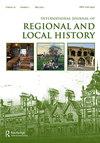东安格利亚的非洲人(1467-1833
Q2 Arts and Humanities
International Journal of Regional and Local History
Pub Date : 2022-01-02
DOI:10.1080/20514530.2022.2058210
引用次数: 0
摘要
与资助那里学徒的遗赠平行),并在那里建造一座公共图书馆,收藏他自己收藏的近5000册书籍和手稿。一系列章节重建了普卢姆的图书馆,以及建筑、书籍和手稿收藏在经济和建筑危机中的变迁,使其成为现在重要的建筑和文献宝库,在此基础上,正在进行的编目和数字化工作根据Plume的公共可用性创始原则,扩大了对图书馆的访问并使其民主化。在这里,有几章,尤其是Doe、David Pearson和Helen Kemp的章节,成功地证明了该卷强调通过语境理解的价值。这项工作将图书馆的基础置于同时期建立的教区和其他公共图书馆以及图书拍卖、遗赠和“借阅”文化的背景下,支持了这样一种论点,即正如皮尔逊所说,这是一个由学者牧师而非古董商组成的图书馆,三分之二的人可能不出所料地致力于神学和宗教,但另三分之一是针对更广泛的古典主义和其他作家和主题。与其他章节一样,特别是Thornton和Max Earnshaw的章节,有很多关于信托的当地历史、其成员资格以及他们在建立和维护Plume遗产中发挥的重要作用的新鲜而重要的材料,从他去世到现在,他们的人数,以及有时对当地受托人团体提出的相当大的要求。普卢姆也许在他(记录在案的)大部分生活中都是无可挑剔的,但因为他的慈善事业。在这本书的刺激下,未来的工作将有助于回答贯穿整本书的一个问题,即在他的慈善事业规模中,典型和非凡之间的平衡在哪里。正如各章赞许地表明的那样,普卢姆并不追求名声,也不希望他的许多遗产以他的名字命名。尽管如此,鉴于这本书的质量,我们希望未来关于当地早期现代慈善史的比较工作将借鉴这里的优秀作品,并使托马斯·普卢姆(Thomas Plume)的例子更为人所知,他被18世纪埃塞克斯郡的历史学家称为“这个慷慨的人”。本文章由计算机程序翻译,如有差异,请以英文原文为准。
Africans in East Anglia, 1467-1833
parallel to a bequest to fund apprenticeships there) and money to build there a public library to house his own collection of books, running to nearly 5000 volumes and manuscripts. A series of chapters reconstruct Plume’s library and the vicissitudes through economic and architectural crises of the building, book and manuscript collection to its now important status as an architectural and bibliographical treasure house, on which ongoing work in cataloguing and digitising has extended and democratised access to the Library in accordance with Plume’s founding principle of public availability. Here several chapters, notably those by Doe, David Pearson and Helen Kemp successfully demonstrate the value of the volume’s emphasis on understanding through contextualisation. Placing the library’s foundation in the context of the contemporaneous establishment of parochial and other public libraries and the culture of book auctions, bequests and ‘borrowings’, this work underpins the argument that this was a library, as Pearson puts it, of a scholar-clergyman, not antiquarian, with two-thirds perhaps predictably devoted to theology and religion, but the other third to a wider variety of classical and other authors and subjects. Here as in other chapters, notably that by Thornton and Max Earnshaw, there is much fresh and important material on the local history of trusts, their membership and the important role they played (and play) in the establishment and maintenance of Plume’s bequests, on the numbers drawn into their running from his death to the present and the sometimes considerable demands this placed on local groups of trustees. Plume was perhaps unexceptionable in much of his (recorded) life, but for his philanthropy. Future work, stimulated by this volume, will help to answer the question that runs quietly through the volume as to where the balance between typical and exceptional lies in the scale of his philanthropy. As various chapters make approvingly clear, Plume did not seek fame, not wishing to have his many bequests named after him. Nevertheless, given the quality of this volume, it is to be hoped that future comparative work on the local history of early modern philanthropy will draw on the excellent work here and make the example of Thomas Plume, called by an eighteenth-century historian of Essex ‘this munificent person’, better known.
求助全文
通过发布文献求助,成功后即可免费获取论文全文。
去求助
来源期刊

International Journal of Regional and Local History
Arts and Humanities-History
CiteScore
0.30
自引率
0.00%
发文量
10
期刊介绍:
The International Journal of Regional and Local History aims to publish high-quality academic articles which address the history of regions and localities in the medieval, early-modern and modern eras. Regional and local are defined in broad terms, encouraging their examination in both urban and rural contexts, and as administrative, cultural and geographical entities. Regional histories may transcend both local and national boundaries, and offer a means of interrogating the temporality of such structures. Such histories might broaden understandings arrived at through a national focus or help develop agendas for future exploration. The subject matter of regional and local histories invites a number of methodological approaches including oral history, comparative history, cultural history and history from below. We welcome contributions situated in these methodological frameworks but are also keen to elicit inter-disciplinary work which seeks to understand the history of regions or localities through the methodologies of geography, sociology or cultural studies. The journal also publishes book reviews and review articles on themes relating to regional or local history.
 求助内容:
求助内容: 应助结果提醒方式:
应助结果提醒方式:


